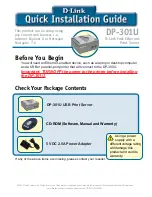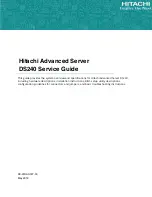
68
SuperServer E300-9D User's Manual
ACPI Settings
Use this feature to configure Advanced Configuration and Power Interface (ACPI) power
management settings for your system.
WHEA Support
Select Enabled to support the Windows Hardware Error Architecture (WHEA) platform and
provide a common infrastructure for the system to handle hardware errors within the Windows
OS environment in order to reduce system crashes and enhance system recovery and health
monitoring. The options are Disabled and
Enabled
.
High Precision Event Timer
Select Enabled to activate the High Precision Event Timer (HPET) that produces periodic
interrupts at a much higher frequency than a Real-time Clock (RTC) does in synchronizing
multimedia streams, providing smooth playback and reducing the dependency on other
timestamp calculation devices, such as an x86 RDTSC Instruction embedded in the CPU.
The High Performance Event Timer is used to replace the 8254 Programmable Interval Timer.
The options are Disabled and
Enabled
.
Trusted Computing
The following features are displayed if a TPM 1.2 module is detected:
Configuration
Security Device Support
If this feature and the TPM jumper on the motherboard are both set to Enabled, onboard
security devices will be enabled for TPM support to enhance data integrity and network
security. Reboot the system for a change on this setting to take effect. The options are Disable
and
Enable
.
TPM State
Select Enabled to use TPM (Trusted Platform Module) settings to enhance system data
security. Reboot your system for any change on the TPM state to take effect. The options
are Disabled and
Enabled
.
Pending Operation
Use this feature to schedule a TPM-related operation to be performed by a security device
for system data integrity. The options are
None
and TPM Clear.
Note
: Your system will reboot to carry out a pending TPM operation.
















































